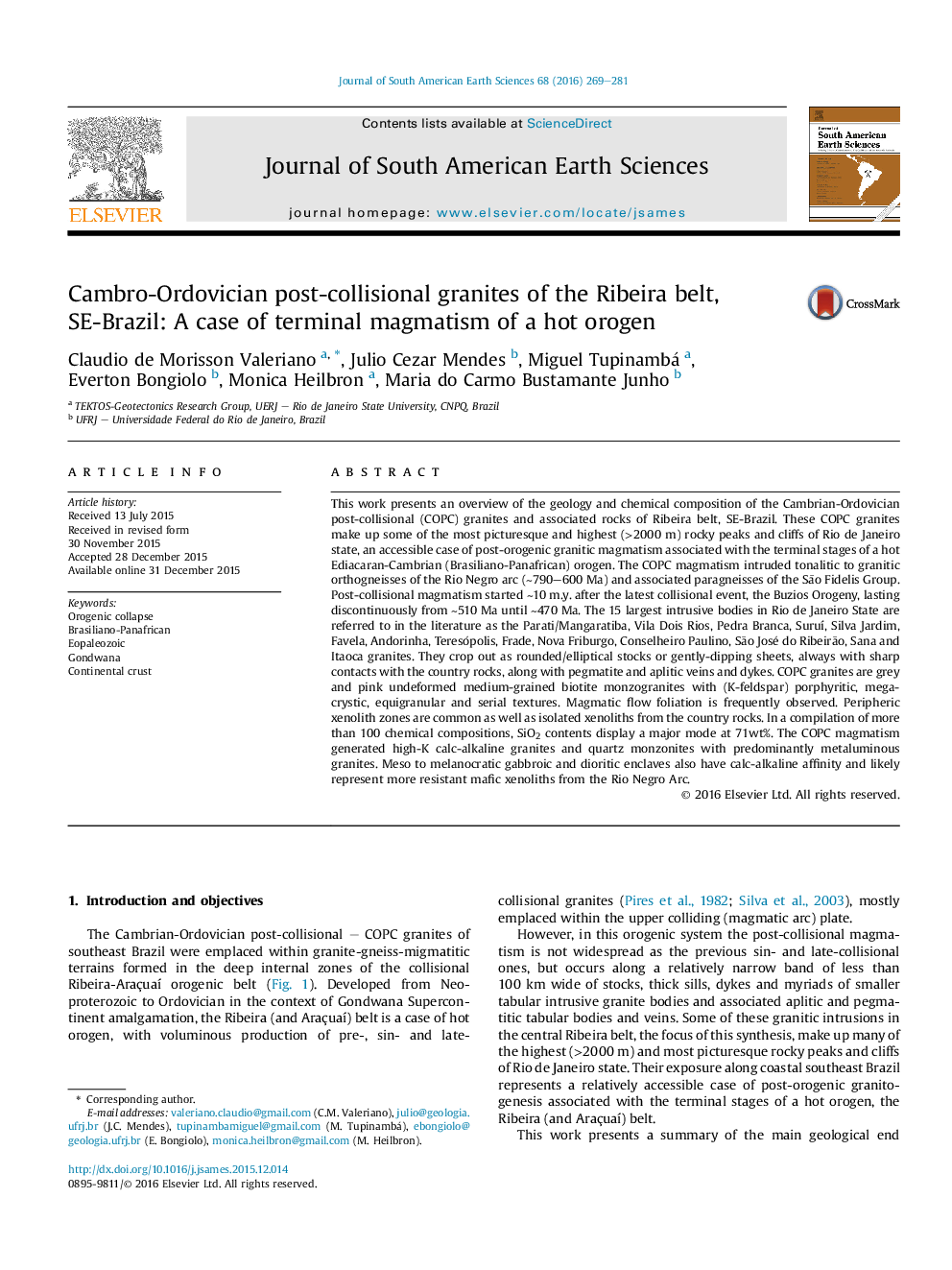| کد مقاله | کد نشریه | سال انتشار | مقاله انگلیسی | نسخه تمام متن |
|---|---|---|---|---|
| 4682046 | 1635142 | 2016 | 13 صفحه PDF | دانلود رایگان |

• Post-collisional magmatism took place from ~510 Ma to ~480 Ma and started ~10 m.y. after the last orogeny (~530–520 Ma).
• A compilation of more than 100 major element compositions shows predominance of high-K calc-alkaline metaluminous granites and quartz monzonites.
• Slab break-off with generation of tholeiitic magma explain some of the compositional indications of magma mixing.
This work presents an overview of the geology and chemical composition of the Cambrian-Ordovician post-collisional (COPC) granites and associated rocks of Ribeira belt, SE-Brazil. These COPC granites make up some of the most picturesque and highest (>2000 m) rocky peaks and cliffs of Rio de Janeiro state, an accessible case of post-orogenic granitic magmatism associated with the terminal stages of a hot Ediacaran-Cambrian (Brasiliano-Panafrican) orogen. The COPC magmatism intruded tonalitic to granitic orthogneisses of the Rio Negro arc (∼790–600 Ma) and associated paragneisses of the São Fidelis Group. Post-collisional magmatism started ∼10 m.y. after the latest collisional event, the Buzios Orogeny, lasting discontinuously from ∼510 Ma until ∼470 Ma. The 15 largest intrusive bodies in Rio de Janeiro State are referred to in the literature as the Parati/Mangaratiba, Vila Dois Rios, Pedra Branca, Suruí, Silva Jardim, Favela, Andorinha, Teresópolis, Frade, Nova Friburgo, Conselheiro Paulino, São José do Ribeirão, Sana and Itaoca granites. They crop out as rounded/elliptical stocks or gently-dipping sheets, always with sharp contacts with the country rocks, along with pegmatite and aplitic veins and dykes. COPC granites are grey and pink undeformed medium-grained biotite monzogranites with (K-feldspar) porphyritic, mega-crystic, equigranular and serial textures. Magmatic flow foliation is frequently observed. Peripheric xenolith zones are common as well as isolated xenoliths from the country rocks. In a compilation of more than 100 chemical compositions, SiO2 contents display a major mode at 71wt%. The COPC magmatism generated high-K calc-alkaline granites and quartz monzonites with predominantly metaluminous granites. Meso to melanocratic gabbroic and dioritic enclaves also have calc-alkaline affinity and likely represent more resistant mafic xenoliths from the Rio Negro Arc.
Figure optionsDownload as PowerPoint slide
Journal: Journal of South American Earth Sciences - Volume 68, July 2016, Pages 269–281